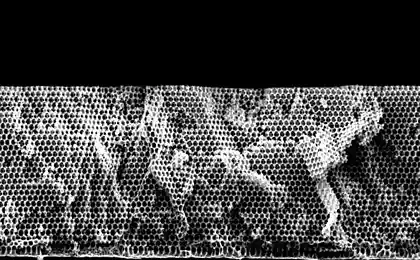475
Elephant seals found in favor of carbon monoxide

In the blood of elephant seals have discovered extremely high levels of carbon monoxide – presumably they're using it to protect themselves from the effects of hypoxia, which is inevitable during a long stay under water.
Carbon monoxide, or carbon monoxide (CO) scare us from school. He has no taste, no color, no smell, but quite poisonous due to the fact that forms a very strong complex with the protein hemoglobin. As we all know, hemoglobin carries oxygen from the lungs to other tissues and organs, but, if the hemoglobin combines carbon monoxide, a molecule of oxygen out it will not displace. Roughly speaking, CO deprives the body of oxygen by binding to hemoglobin, carbon monoxide stops gas exchange.
Most often, carbon monoxide is remembered in connection with the fires or in connection with furnace heating – under certain conditions fuel is combusted with the formation of large amounts of CO, and the person runs the risk of severely poisoned and even die. The fact that this gas has no taste, no smell, makes it even more dangerous. In fact, however, at low concentrations it is harmless: we all have some amount of hemoglobin associated with CO that is formed as a byproduct of certain biochemical processes. The normal number of spoiled carbon monoxide hemoglobin in an adult is extremely small – only 1% of the total amount of hemoglobin. However, its percentage may be much grow in smokers (and that's another reason to give up the habit).
Given what we know about CO, it is hard to imagine that it could be some biological benefit. But sea elephants, apparently, managed to find a use for it. Michael Tift (Michael Tift), University of California, San Diego with the help of colleagues measured the level of CO in the blood of Northern elephant seals – and found that these animals have 10% of hemoglobin is in the complex with carbon monoxide. If suddenly a person want to be compared to a sea elephant and tie 10% of their hemoglobin with CO, he'll have to smoke 40 cigarettes a day.
As reported by Michael Tift, sea elephants have the largest blood volume of any mammal (of course, the amount of which we correlated with the body size of the animal), so the researchers are not surprised to find in their blood and a relatively large concentration of co.
Also note that even that amount off of hemoglobin does not interfere with the gas exchange at the sea elephants. In fact, 10% is associated with hemoglobin nothing bad will do – to feel the first signs of poisoning, the carbon monoxide was contacted with 20% hemoglobin, the death comes at 50% and above.
Marine elephants increased dose of carbon monoxide in the blood is at all individuals, regardless of gender and age. The question is, why? In an article in the Journal of Experimental Biology, the researchers suggest that the animals needed to protect cells from damage associated with the drop in the level of oxygen in the blood.
Elephant seals dive to a depth of 1 500 metres, the time it takes a lot, and they have a system that allows you to properly dispose of the oxygen supply during the dive. Ducking, animals cut off the blood circulation in some organs and tissues so they don't waste precious oxygen – you can tell that these organs and tissues are transferred to oxygen with reduced rations. But then, when the elephant POPs up, the blood flow is restored everywhere, and there is a risk of the so-called reperfusion syndrome.
This phenomenon is long known to physiologists and physicians: if the fabric some time is experiencing oxygen starvation, and then the oxygen supply is restored, cells happen numerous injuries, sometimes very serious. That is from hypoxia tissue suffers, but subsequent excess oxygen causes her to suffer even more. (The reason that I see is that the sudden excess of oxygen triggers the harmful oxidative reactions, which cells do not have time to deal.)
According to the authors of the study, the carbon monoxide helps marine elephants to avoid the effect of reperfusion, when, after oxygen starvation in the tissues and organs comes again blood, rich in oxygen. In fact, to talk about the absolute harm (or, at best, unprofitable) of carbon monoxide would not be quite correct – in the last few years doctors are actively studying WITH just on the subject of its beneficial physiological properties.
It turned out that small doses of carbon monoxide prevents inflammation and protects cells from death; moreover, transplant think it'll help to protect transplanted organs from damage. (As you can guess, the organs for transplant is also threatened by the reperfusion syndrome.) So research on the phenomenon WITH marine elephants may have the most that neither is practical medical value.

It is clear now that the scientists have to learn more about the physiology of elephant seals to confirm their hypothesis about the protective nature of co, and at the same time and compare the content of carbon monoxide in animals-divers with their related types. If we compare penguins to other birds, not will we find between them a strong difference in the content related to the features of the penguin lifestyle?
Another question: how marine elephants are able to accumulate such relatively large number FROM? Not about the Smoking as their suspect.
Speaking of elephant seals is not the first time scientist are able to understand which protective physiological mechanisms can operate in animals who have to spend long hours under water. Two years ago, for example, researchers from the SCRIPPS Institute of Oceanography published a paper in which he explained why the sea elephants do not suffer from seasickness.
As it turned out, they save a portion of the stored air in the trachea and upper bronchial tubes that cannot carry out gas exchange – oxygen in blood hence misses, but misses her, and a dangerous nitrogen at great depths, usually into the blood and when the pressure difference causes the bends. This supply of air animals expend on the rise, when they are still under water, but it went from great depths, where the blood could be "infected" by nitrogen. As you can see, evolution has made sea elephants real experts on the physiology of gas exchange.
Source: nkj.ru























